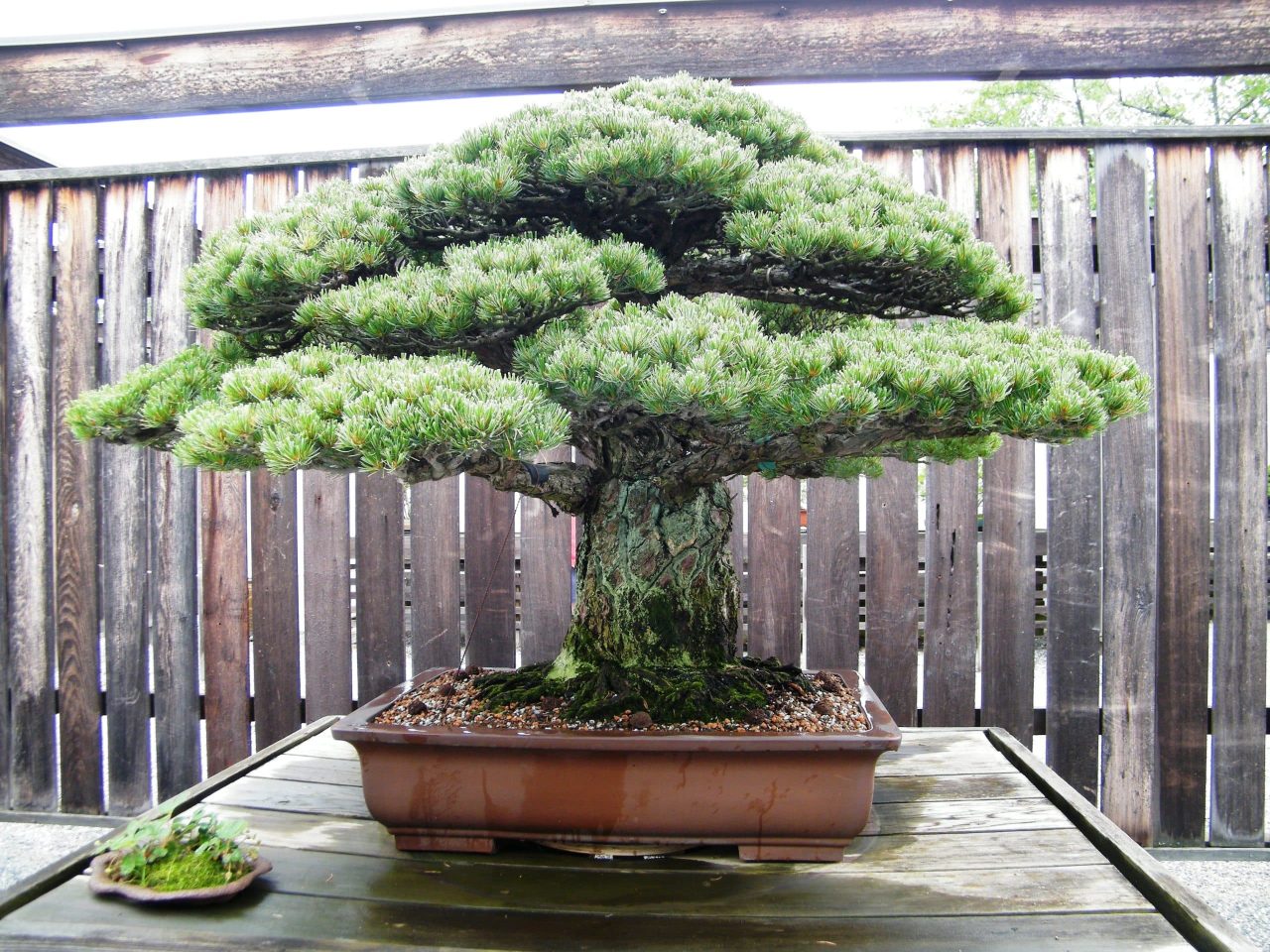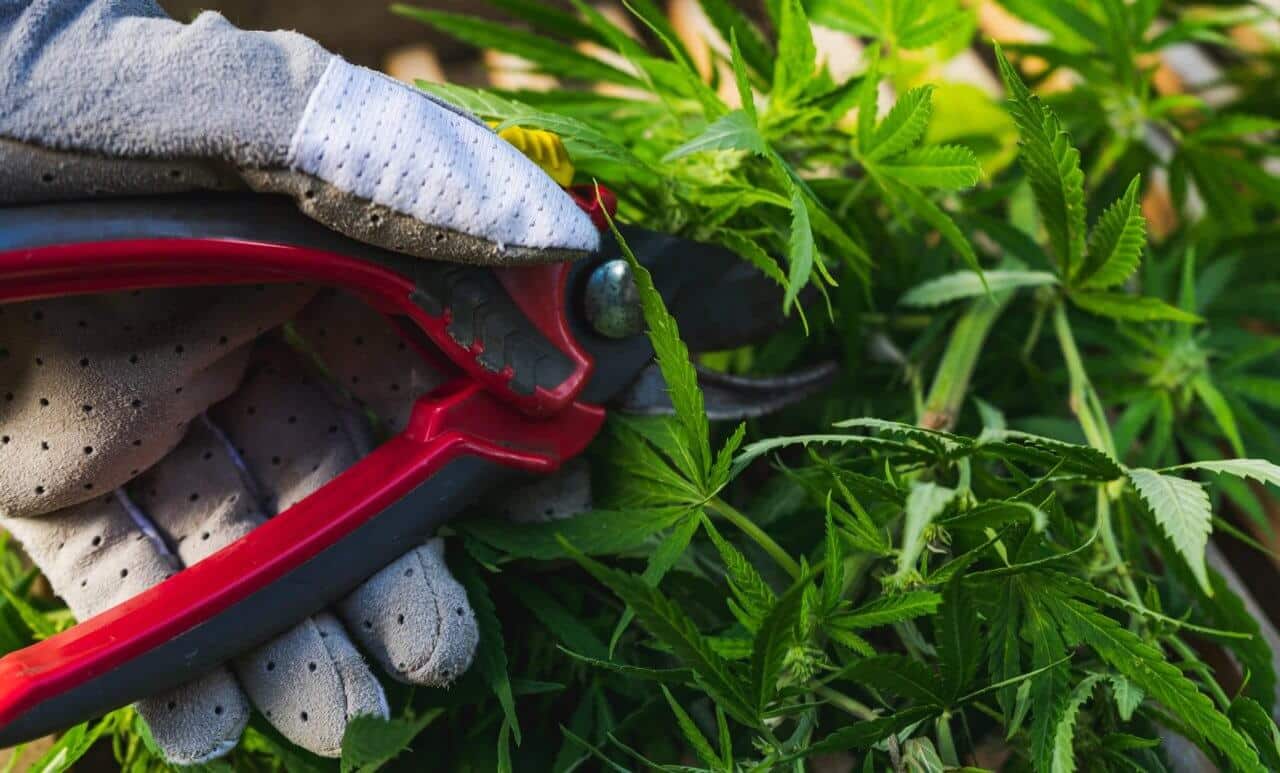Free Tropical Runtz seeds on orders over $150!
Cannabis bonsai is a new and fascinating method of cultivating and displaying the beauty of the cannabis plant. You can build a small replication of a full-sized cannabis tree, filled with rich foliage and fascinating branching patterns, by carefully shaping and pruning the plant. However, growing and maintaining a cannabis bonsai necessitates a thorough grasp of the plant’s requirements and features. Discover the stages and techniques required in developing and maintaining a cannabis bonsai, from selecting the ideal strain to pruning and shaping techniques to proper watering and fertilizer management.
A cannabis plant can be ideal for bonsai cultivation due to several reasons:
Bonsai is the technique of cultivating decorative, intentionally stunted plants and trees in containers. The phrase ‘bonsai’ is a Japanese term planted in a container. Bonsai plants are said to have originated in Japan, although the tradition originates in China, where it is popular as an art form and horticultural approach. More than 2000 years ago, the Chinese began practicing penjing, or tiny landscape painting.

Tiny replicas of landscapes were thought to be infused with magical characteristics that might be conveyed to students who focused on them. When a tree is planted in a restricted container or pot, its capacity to absorb nutrients and build an extensive root system is limited, dwarfing its development. Certain aesthetic values are also followed in bonsai cultivation. Bonsai practitioners use careful and purposeful pruning to gradually shape the bonsai plant into the look of an older, more mature tree.
Cultural significance of cannabis bonsai
In Japan, bonsai cultivation became associated with the concept that growing small trees was a quiet, reflective, and harmonious art form that improved communication with nature. Unsurprisingly, bonsai got intertwined with Zen Buddhism, which flourished concurrently with bonsai during Japan’s Kamakura era. According to historians, Buddhist monks were the primary teachers of bonsai in Japan for years. Zen is a religious practice within Buddhism, yet many people enjoy Zen principles without practicing the religion.
Several Zen qualities are essential for excellent bonsai horticulture. First, the tree’s development should be managed by human hands, but human manipulation of the plant should be concealed. Bonsai should also be planted slightly off-center so that they do not block the center point of the container, which Buddhists believe signifies the meeting point of heaven and earth. The bonsai tree should also influence the artist’s mental condition. The practitioner’s daily care should become a peaceful and thoughtful moment.
You should select a cannabis strain with a compact growth pattern and smaller leaves, as these are ideal for bonsai cultivation. Here are three common autoflower strains ideal for cannabis bonsai:
Pure Michigan Auto is recognized for its adaptability and ability to survive Michigan’s harsh climate. Pure Michigan Auto seeds also have a flowering time of 7-8 weeks and are easy to grow, as they are autoflowering and can adapt to different climates and environments. Regarding visual appeal for use as a bonsai, you’ll have classic slender leaves of an Indica plant, with almost white and frosty buds, a dark green color, and purple hues. Pure Michigan Auto would be perfect for any short, confident bonsai style with time and a little effort.
Bruce Banner Auto is easy to grow, has a short blossoming stage of 7 to 8 weeks, and can be harvested from seed in 10 to 11 weeks. These Sativa-dominant hybrid strain seeds can grow between 110-150 cm and develop multiple flowering sites with bright green buds. Bruce Banner Auto is another strain that is bonsai style well, as its leaves might look best when cultivated.
Gorilla Glue Auto is well-known as one of the strongest autoflowers in the world, with an insane trichome production. Gorilla Cookies Auto also has all of its parent strains’ greatest characteristics, making it unique for all growers. These autoflowering seeds flourish indoors and outdoors as a balanced hybrid of Sativa and Indica while remaining super-reliable and resilient to the weather. Furthermore, Gorilla Cookies Auto grows stout and bushy, reaching around 100cm while displaying a compact yet robust appearance with wide internodal spacing, making it an ideal choice for bonsai styles that evoke strength and resilience.
To cultivate a bonsai cannabis tree, you will need the following tools and materials:
You may also require the following bonsai tools:

The most frequent type of growth media for cannabis bonsai is regular potting soil since it is cheap, easy to find, and use. Before planting your cannabis bonsai in your growth medium, ensure it is well-watered and test the drainage level. You should watch the water soak in within 30 seconds. After watering, feel the soil to check that the water is dispersed evenly. This is the time to make changes to the soil or growth medium so you don’t have to disturb the plant again after it’s established.
The process of bonsai cannabis involves carefully pruning and training the plant to maintain its small size and desired shape.
Pruning is one of the key components that constitute the bonsai technique. As the plant grows, its branches must be pruned to retain the typical bonsai shape and height and provide airflow to the plant’s main stem. Only trim offshoot branches since cutting primary ones might harm your plant’s health and growth. It is debatable how long bonsai mother trees should be maintained alive. Canna-bonsais may be preserved for as long as they are alive since they can be kept eternally in the vegetative state.
Wiring is the process of carefully wrapping wire around the branches of a bonsai tree to induce growth in a certain direction. The wire should be applied lightly to prevent damaging the branches. The wire may be changed or removed as the branches develop. Furthermore, this approach gives you full control over the shape and structure of your cannabis bonsai.
The lighting requirements for a cannabis plant vary based on its stage. If it is actively developing, it requires 13-14 hours of light every day. During this period, it’s typical for cannabis bonsai owners to have a grow lamp on hand to provide the plant with all the light it needs. This plant’s light needs to decrease to 10-12 hours daily during the dormant developing period. It is simple to change the stage of the plant by employing illumination.
You can change these phases every month or so, but it’s best to let the cannabis plant choose its rate of growth and adapt your lights appropriately. If you want to avoid utilizing artificial lighting, place your plant where it will receive late morning and early afternoon sunlight. The late afternoon sunlight may be too strong for some cannabis varieties.
The secret to growing a great cannabis bonsai is maintaining consistent temperature and humidity. Cannabis bonsai flourish at temperatures ranging from 70 to 80 degrees Fahrenheit, with humidity levels ideally ranging from 40 to 50%. If the temperature and humidity are too high, the cannabis plant’s leaves will become yellow and drop off. Conversely, the leaves will turn brown and curl up if the levels are too low. Additionally, using a humidifier or a humidity tray is an easy approach to improving humidity levels around your plant. If you keep your home colder in the winter, a portable heater may be essential; however, be sure the heater does not dry out your plant.
It is essential to water your cannabis bonsai regularly but not excessively. Overwatering can cause root rot, which can rapidly destroy your plant. When watering your plant, use purified water or reverse osmosis water, and water it well. You should let the soil dry out between waterings to prevent root rot. Water your bonsai once every 5-7 days as a general guideline. Although it is ideal to mark your calendar to water your plant every five days, you should allow your plant to tell you when it needs to be watered. Before watering, inspect the soil. It’s time to water if the top layer is dry. If it’s still wet, wait a day or two and check again. This is the most effective technique to avoid root rot and keep your cannabis plant healthy.
Fertilize your bonsai regularly to maintain its health. Use a high-quality fertilizer made exclusively for cannabis plants. Follow the directives on the package to prevent over- or under-fertilizing your plant. You’ll most likely fertilize your cannabis plant on a regular basis. Simply watch your plant’s development and reduce fertilizer when it slows. You don’t want to risk burning the roots of your cannabis plant.
Repotting and transplanting bonsai cannabis is a delicate procedure that involves precise time, planning, and execution. Here are some guidelines and basic tips on how to proceed:
A cannabis bonsai is an excellent method to learn about plant training while creating stunning bonsai that will impress even non-cannabis fans. Cultivating a cannabis bonsai tree is an interesting experience that combines creativity and horticulture. With careful selection, diligent training, and a dash of patience, you may build a little masterpiece embodying the beauty of nature and human creation. Once you’ve had your bonsai cannabis, try placing it on a pedestal or bonsai stand to emphasize its elegance and surprise those who visit unexpectedly!





Offers
This product is not for use by or sale to persons under the age of 18. This product should be used only as directed on the label. It should not be used if you are pregnant or nursing. Consult with a physician before use if you have a serious medical condition or use prescription medications. A doctor’s advice should be sought before using any hemp products. All trademarks and copyrights are property of their respective owners and not affiliated with nor do they endorse this product. These statements have not been evaluated by the FDA. This product is not intended to diagnose, treat, cure or prevent any disease. By using this site you agree to follow the Privacy Policy and all Terms & Conditions printed on this site. All products contain less than 0.3% Cannabinoid-compliant with applicable Federal Laws. Please make yourself aware of any and all applicable laws regarding hemp in your jurisdiction. Premium Cultivars accepts no liability or responsibility regarding germination laws in any specific locale state or national jurisdictions.THCA products are not available for shipment to the following states: Hawaii, Idaho, Minnesota, Oregon, Rhode Island, Utah, Vermont *Note: Products with Total THC content above 0.3% must not be shipped to these states.
We want to help you get your hands on the seeds you want, take 20% off your next purchase when you enter your email below!
We want to help you get your hands on the seeds you want, take 20% off your next purchase when you enter your email below!